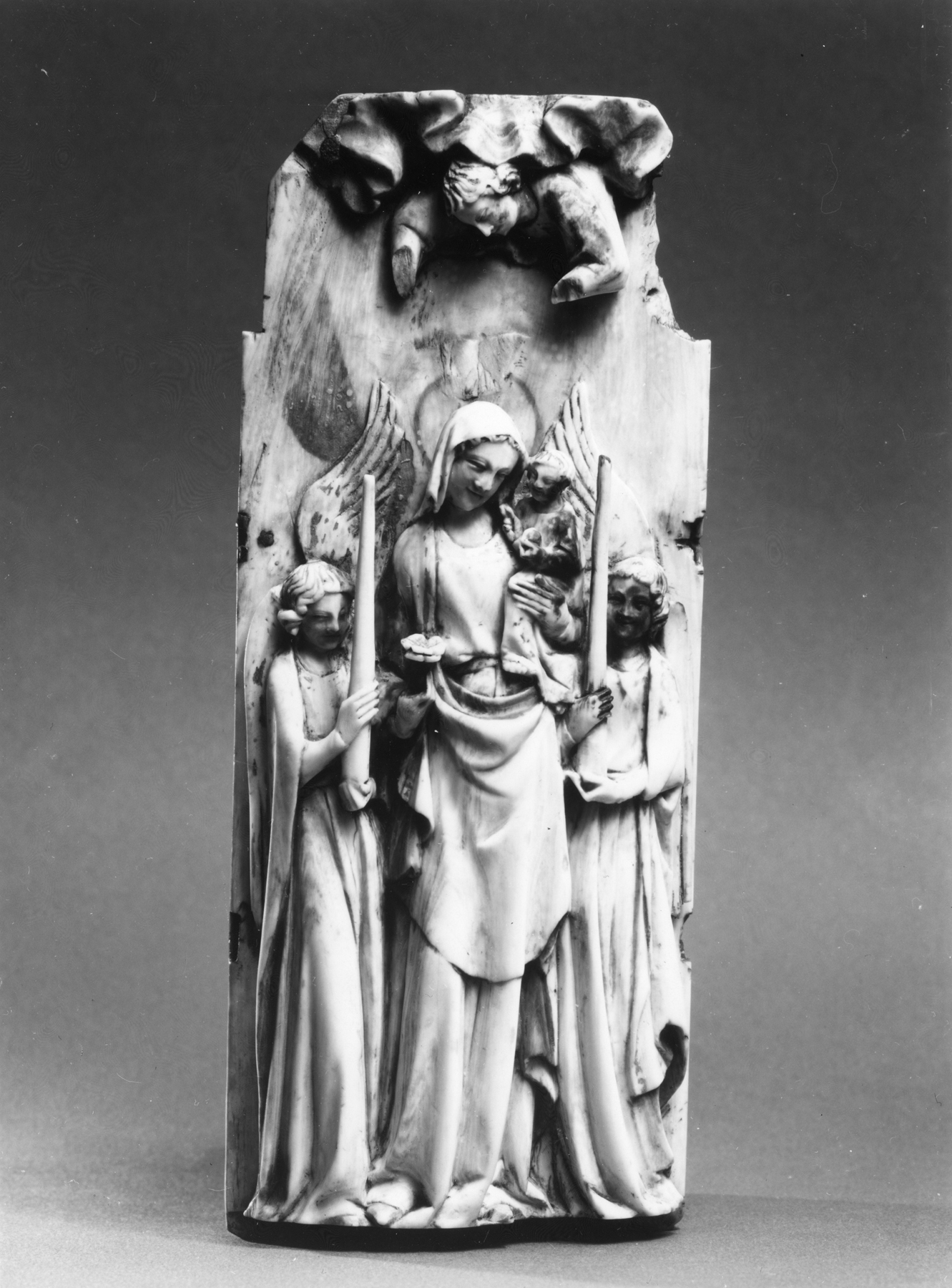Virgin and Child with Angels
(Medieval Europe )
The Virgin, who holds the Child, is shown standing between candle-bearing angels, and is crowned by an angel issuing from the clouds.
The figures are carved in relief on a thin panel. Two sets of hinge miters suggest that it was the center of a triptych or, more likely, a polyptch. The panel has an original indentation at the top left and is broken at the top right. The arms of the angel in the clouds and the crown are missing. The base has been cut at the bottom. There are traces of polychromy, including patterns of gilt dots in the background.
The extraordinary elongation of the Virgin finds parallels in ivories dating from the 2nd quarter to the end of the century. The drapery, on the other hand, is of the apron type found in the 2nd quarter of the 14th century, which may indicate that the ivory is a conservative and later provincial work.
Provenance
Provenance (from the French provenir, 'to come from/forth') is the chronology of the ownership, custody, or location of a historical object. Learn more about provenance at the Walters.
Henri Daguerre, Paris [date and mode of acquisition unknown]; Henry Walters, Baltimore, 1924, by purchase; Walters Art Museum, 1931, by bequest.
Geographies
France (Place of Origin)
Measurements
H: 6 15/16 x W: 2 3/4 in. (17.6 x 7 cm)
Credit Line
Acquired by Henry Walters, 1924
Location in Museum
Not on view
Accession Number
In libraries, galleries, museums, and archives, an accession number is a unique identifier assigned to each object in the collection.
In libraries, galleries, museums, and archives, an accession number is a unique identifier assigned to each object in the collection.
71.211


